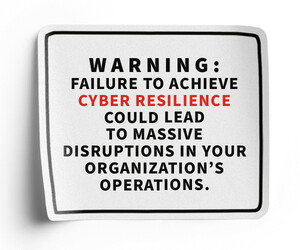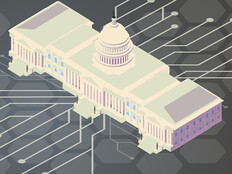How Does OSCAL Lay the Groundwork for Automation and Interoperability?
One of OSCAL’s core strengths lies in its ability to automate traditionally labor-intensive processes and enable interoperability between different security tools and systems from the various stakeholders involved in compliance. Historically, this fragmentation has delayed critical operations.
“There’s so much human involvement in these processes that doesn’t need to be there,” DeRusha says. “With OSCAL, agencies can automate repetitive tasks, reduce errors and ensure consistent data handling.”
Automation is especially valuable for time-sensitive tasks such as compliance reviews. Under traditional methods, agencies often face lengthy delays as authorizers review documentation manually.
OSCAL can significantly expedite this process by providing machine-readable packages that allow for quicker feedback and iteration.
“What used to take months can now be completed in days,” DeRusha says.
This acceleration benefits not only agencies but authorizers and other stakeholders who rely on up-to-date security information.
DISCOVER: Outsource these aspects of your agency’s security model.
Additionally, OSCAL’s standardized format promotes interoperability across different governance, risk and compliance tools, allowing agencies to integrate the framework into existing workflows and systems without significant disruption.
“Standardization enables better sharing of information, both within agencies and with external authorizers,” DeRusha says.
This capability is particularly important for fostering collaboration and reducing redundancies across the government.
What Are OSCAL’s Benefits?
OSCAL’s machine-readable formats, such as JSON and YAML, facilitate automation that ensures security controls are consistently implemented and interpreted across the enterprise. This, in turn, transforms compliance audits from lengthy, manual ordeals into streamlined, data-driven reviews.
“Faster reviews mean agencies can move forward with projects more efficiently, avoiding costly delays,” DeRusha says.
Agencies can also more easily maintain continuous compliance with evolving requirements using OSCAL.
“With OSCAL’s standardized documentation, agencies gain unparalleled visibility into their security posture, enabling better decision-making and proactive risk management,” Rossman says.
RELATED: Agencies are turning to next-generation security incident and event management tools.
In the long term, OSCAL supports more strategic objectives such as continuous monitoring and global standardization. Continuous monitoring allows agencies to maintain an up-to-date view of their security posture, which is essential for responding to rapidly evolving threats.
“If we can standardize globally, the benefits will extend far beyond federal agencies to multinational companies and governments,” DeRusha says.
Is Adopting OSCAL Required?
OSCAL is becoming a requirement for agencies as part of broader efforts to modernize security compliance processes.
A 2024 memo from the Office of Management and Budget established a two-year timeline for agencies to adopt OSCAL under the Federal Risk and Authorization Management Program. This mandate reflects the government’s commitment to standardizing security documentation and leveraging automation to improve efficiency.
“Agencies are required to use OSCAL to align with modernization efforts, but the transition will take time,” DeRusha says.
Agencies are encouraged to begin integrating OSCAL into their workflows now to meet the upcoming requirements and gain experience with the framework.
WEST 2025: The Navy is focused on modern service delivery.
How Can Your Agency Get Started With OSCAL?
Agencies looking to implement OSCAL should take a phased, strategic approach, starting with areas that can quickly enhance security and compliance programs and referencing NIST’s foundational guidance.
“The OSCAL community on GitHub is a valuable resource for tools and proven implementation patterns,” Rossman says.
Participating in initiatives such as FedRAMP’s Digital Authorization Package Pilot can help agencies seeking practical insights from peers and experts.
Agencies should begin by converting existing security documentation into OSCAL formats, which will allow them to experience its benefits while maintaining operational continuity.
“Integrating OSCAL into current processes maximizes value from existing investments and builds a foundation for future capabilities,” Rossman says.
Agencies should also work closely with authorizers and other stakeholders to ensure alignment and minimize the need for rework.
“Collaboration is key, especially for agencies implementing OSCAL for the first time,” DeRusha says.
UP NEXT: Ransomware attacks require improved information sharing.












